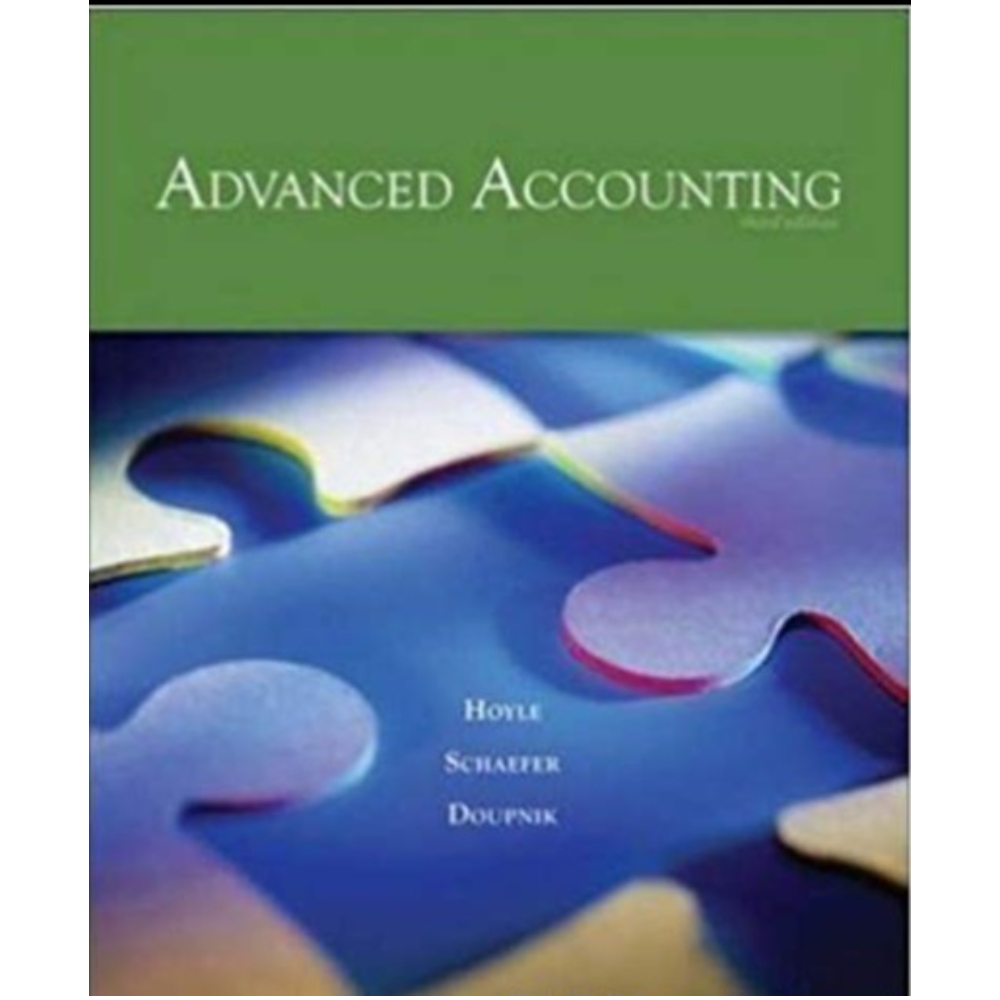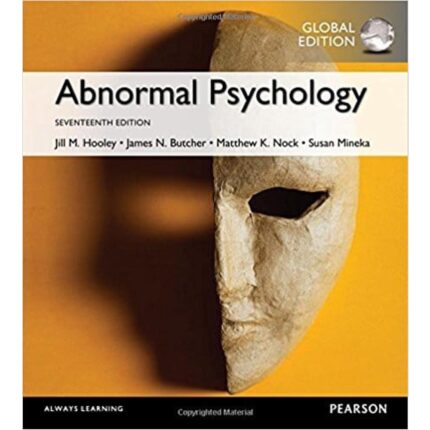Advanced Accounting 9th Edition By Hoyle – Test Bank
Answer to Discussion Question
How Do We Report This?
This case represents the ongoing debate as to the proper reporting of foreign currency balances. Southwestern has invested the equivalent of $30,000 (150,000 vilseks) in each of three assets. The relative value of the vilsek has now changed. Thus, 150,000 vilseks now can be converted into $34,500. However, the subsidiary does not have vilseks–only land, inventory, and investments. Although the current exchange rate is given, the company has no apparent plans to convert its assets into dollars. Instead, these three assets are being held, each with a historical cost of 150,000 vilseks. Under the temporal method, these assets (except for the investments if carried at market value) would be reported in the parent’s balance sheet at the original cost of $30,000. Unfortunately, as the Finance Director points out, an old, outdated rate is being utilized if the $30,000 figure is reported. (Of course, given that prices tend to change over time, the same can be said for any asset reported at historical cost.)
Conversely, the current rate method requires that each of the three assets be reported at $34,500 based on the current exchange rate. As the controller indicates, though, $34,500 was not the original cost expended by Southwestern. In addition, using the current rate means that each of the assets will constantly report a “floating” value, one that will change with each exchange rate fluctuation. Finally, the $34,500 figure is based on the current value of the vilsek ($.23) and the historical cost in vilseks (150,000 vilseks) for the three assets. The current exchange rate is only significant if the assets are sold with the proceeds being converted into U.S. dollars. Since an imminent sale is not indicated, the validity of reporting the $34,500 might again be questioned. In addition, even if the assets were sold, $34,500 does not accurately reflect the proceeds in U.S. dollars because 150,000 vilseks is the historical cost and not the current market value of each of these assets.
As a classroom exercise or written assignment, students could be required to select a reported value for each of the three assets and then defend their position. What figure is actually the fairest representation of each of the three assets? What figure is the best conveyor of information to an outside party? There is no single best answer to these questions. The purpose of this type of exercise is to force students to consider the objectives of financial reporting. Students should not just assume that the current official pronouncement is correct. One possible approach to the case is to assign several students to represent banks or stockholders and discuss the types of information that is most needed by these users. Another group of students can take the position of the company responsible for preparing the information and discuss management’s preference for providing one type of information over another. Yet another group could take a purely theoretical approach and discuss the goals that accounting has attempted to reach. Although a final resolution may not be achieved, some excellent class discussion is possible.
The temporal and current rate methods of translation differ primarily with regard to the exchange rate used to translate those assets that are reported at historical cost–inventories, prepaids, fixed assets, and intangibles. The debate regarding the appropriate exchange rate for translating assets exists only because some assets are reported at historical cost. If all assets were reported at their current value, there would be no need to use the historical exchange rate for translating assets in order to maintain the asset’s historical cost in U.S. dollar terms. All assets would be translated at the current exchange rate. The differences between the temporal method and current rate method would disappear.
Answers to Questions
1. The two major issues related to the translation of foreign currency financial statements are: (a) which method should be used and (b) where should the resulting translation adjustment be reported in the consolidated financial statements. The first issue relates to determining the appropriate exchange rate (historical, current, or average for the current period) for the translation of foreign currency balances. Those items translated at the current exchange rate are exposed to translation adjustment. The second issue relates to whether the translation adjustment should be treated as a gain or loss in income, or should be deferred as a separate component of stockholders’ equity.
2. Balance sheet exposure arises when a foreign currency balance is translated at the current exchange rate. By translating at the current exchange rate, the foreign currency item in essence is being revalued in U.S. dollar terms on the consolidated financial statements. There will be either a net asset balance sheet exposure or net liability balance sheet exposure depending upon whether assets translated at the current rate are greater or less than liabilities translated at the current rate. Balance sheet exposure generates a translation adjustment which does not result in an inflow or outflow of cash. Transaction exposure, which results from the receipt or payment of foreign currency, generates foreign exchange gains and losses which are realized in cash.
3. Although balance sheet exposure does not result in cash inflows and outflows, it does nevertheless affect amounts reported in consolidated financial statements. If the foreign currency is the functional currency, translation adjustments will be reported in stockholders’ equity. If translation adjustments are negative and therefore reduce total stockholders’ equity, there is an adverse (inflationary) impact on the debt to equity ratio. Companies with restrictive debt covenants requiring them to stay below a maximum debt to equity ratio, may find it necessary to hedge their balance sheet exposure so as to avoid negative translation adjustments being reported. If the U.S. dollar is the functional currency or an operation is located in a high inflation country, remeasurement gains and losses are reported in income. Companies might want to hedge their balance sheet exposure in this situation to avoid the adverse impact remeasurement losses can have on consolidated income and earnings per share.
The paradox in hedging balance sheet exposure is that, by agreeing to receive or deliver foreign currency in the future under a forward contract, a transaction exposure is created. This transaction exposure is speculative in nature, given that there is no underlying inflow or outflow of foreign currency that can be used to satisfy the forward contract. By hedging balance sheet exposure, a company might incur a realized foreign exchange loss to avoid an unrealized negative translation adjustment or unrealized remeasurement loss.
4. The gains and losses arising from financial instruments used to hedge balance sheet exposure are treated in a similar manner as the item the hedge is intended to cover. If the foreign currency is the functional currency, gains and losses on hedging instruments will be taken to other comprehensive income. If the U.S. dollar is the functional currency, gains and losses on the hedging instruments will be offset against the related remeasurement gains and losses.
Answers to Problems
1. C
2. C
3. C
4. B Because the peso is the functional currency, the financial statements must be translated using the current rate method. Therefore, answers a and d can be eliminated. Because the subsidiary has a net asset position and the peso has appreciated from $.16 to $.19, a positive translation adjustment will result.
5. A All asset accounts are translated at current rates.
6. A Because the foreign currency is the functional currency, a translation is required. All assets accounts are translated at current rates.
7. C Because the U.S. dollar is the functional currency, a remeasurement is required. All receivables are remeasured at current rates. Assets carried at historical cost, such as prepaid insurance and goodwill, are remeasured at historical rates.
8. B The foreign currency is the functional currency, so a translation is appropriate. All assets (including inventory) are translated at the current exchange rate [100,000 x $.17].
9. C Cost of goods sold is translated at the exchange rate in effect at the date of accounting recognition, which is the date the goods were sold [100,000 x $.18].
10. D The foreign currency is the functional currency, so a translation is appropriate. All assets are translated at the current exchange rate of $.19.
11. C The U.S. dollar is the functional currency, so a remeasurement is appropriate. Inventory (carried at cost) is remeasured at the historical exchange rate of
$.16. Marketable equity securities (carried at market value) are remeasured at the current exchange rate of $.19.
12. C Beginning inventory FCU200,000 x $1.00 = $ 200,000
Purchases 10,300,000 x $0.80 = 8,240,000
Ending inventory (500,000) x $0.75 = (375,000)
Cost of goods sold FCU 10,000,000 $8,065,000













Reviews
There are no reviews yet.